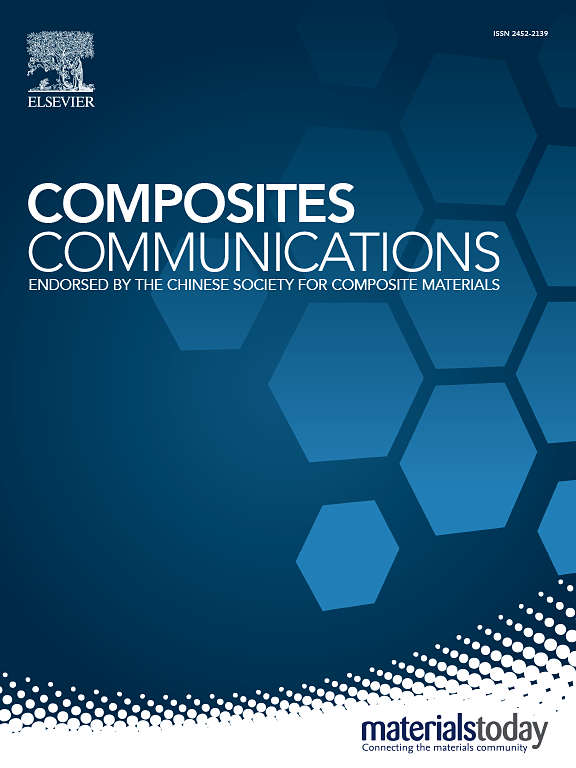Enhancement of the shielding/passivation dual functions of PANI-SSA/epoxy composite coatings by rGO for long-term anti-corrosion of Al alloy
IF 6.5
2区 材料科学
Q1 MATERIALS SCIENCE, COMPOSITES
引用次数: 0
Abstract
Conductive polymers have attracted significant attention in the field of anti-corrosion coatings due to their unique passivation effects on certain metal substrates. In this work, a sulfosalicylic acid doped polyaniline (PANI-SSA)/reduced graphene oxide (rGO)/epoxy (P-r/EP) composite coating was proposed for the long-term anti-corrosion of Al alloys. The strategic introduction of rGO not only enhances the passivation ability of PANI-SSA but also improves the barrier effect of the composite coatings to the corrosive media. The results indicate that the addition of rGO reduces the defects of the composite coatings and improves the compactness of the composite coatings. Additionally, rGO exhibits outstanding electrical conductivity, facilitating the connection of PANI-SSA to form passivation networks in the local area of the composite coatings, thereby fully passivating the Al substrate to form a homogeneous and continuous oxide film. The P-r0.5/EP composite coating exhibits the most durable anti-corrosion performance with the |Z|0.01 Hz value of 5.55 × 109 Ω⋅cm2 after 360 days of immersion, achieving an optimal balance between oxide film formation and the shielding performance of the composite coatings. Consequently, the P-r/EP composite coatings achieve a sustained passivation effect on the Al substrate and show broad potential for long-term anti-corrosion.

求助全文
约1分钟内获得全文
求助全文
来源期刊

Composites Communications
Materials Science-Ceramics and Composites
CiteScore
12.10
自引率
10.00%
发文量
340
审稿时长
36 days
期刊介绍:
Composites Communications (Compos. Commun.) is a peer-reviewed journal publishing short communications and letters on the latest advances in composites science and technology. With a rapid review and publication process, its goal is to disseminate new knowledge promptly within the composites community. The journal welcomes manuscripts presenting creative concepts and new findings in design, state-of-the-art approaches in processing, synthesis, characterization, and mechanics modeling. In addition to traditional fiber-/particulate-reinforced engineering composites, it encourages submissions on composites with exceptional physical, mechanical, and fracture properties, as well as those with unique functions and significant application potential. This includes biomimetic and bio-inspired composites for biomedical applications, functional nano-composites for thermal management and energy applications, and composites designed for extreme service environments.
 求助内容:
求助内容: 应助结果提醒方式:
应助结果提醒方式:


